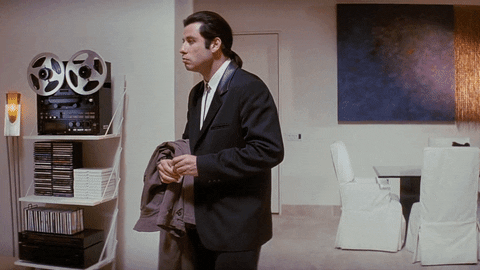Threads, AI Privacy & Love Bombing
5 in 5 - Brave & Heart HeartBeat #165 ❤️
This week we’ll be giving you some solid advice.
From whether your brand should be on Threads, to how to use AI without becoming part of the AI machine (not easy) and why micro-influencers give you more bang for your buck.
On the career front, we’ll be talking how to avoid love-bombing (as a recruiter or an employee) and could adult work experience be the answer to burnout?
Were you forwarded this? Not a subscriber? 👉 Sign up here
#1 - Should Your Brand Be On Threads?
Long story short, no, but most of them will try.
While Threads users are reportedly down by half, the discussion of what strategies brands should be using on Threads seems laughable, yet the articles are piling up.
One LinkedIn post gives a pep talk to fellow marketers, telling them not to feel bad, Threads popped up from nowhere, of course you don’t have a strategy yet! Just get on and feel it out. Now since when was that a good idea? Can you imagine the Mad Men of advertising saying the same thing about newspaper advertising – just write what you feel, play around with it!
Wired magazine have described Threads as THE new place to be, for brands that is… The app seems to be swarming with brands chatting to each other, is there room for consumers?
While it is interesting that Threads seems to be a “friendlier” and more light-hearted place than Twitter, unless you want to advertise your brand to other, bigger brands (the “big five” are already on there, minus CostCo), there’s not much point just yet.
How important is strategy when you’re just screaming emojis into the void?
#2 - How To Use AI Without Sacrificing Your Privacy
There has been an explosion of consumer facing AI tools, such as ChatGPT, Bard from Google and Midjourney image generator. While it’s exciting, and we all want to have a go, especially while they’re free.
If you’ve used ChatGPT, you’ll notice that the fine print at the bottom reads “Free Research Preview”. And what do we always say? If a service is free, especially online, then the product is probably you. So how do you use them without giving yourself away?
First of all, check the terms and conditions. Annoying, but more and more necessary. You want to know what you’re agreeing to.
Secondly, be careful what you share with LLM’s and generative imagery tools. Basically, anything you put into or make using an AI tool is pretty likely to be used to further refine the AI, and pretty much belongs to the developer now - the threat of a data breach can never be ruled out.
When it comes to AI tools that enhance images of your face, don’t use them unless you’re happy with your face, or a likeness of it, being used in other AI creations – of ANY kind.
Thirdly and finally, don’t hesitate to change the settings. Google and Microsoft AI tools give quite clear options on how to control the privacy and security options, such as the automatic or manual deletion of your data, and ChatGPT give you the option to opt out of your data being used to train their AI models.
Or, if it really freaks you out, do what Elon Musk did and create your own.
#3 - What Is A Micro Influencer?
Nope, it’s not a teeny tiny lady with a ring light and very white teeth.
A micro-influencer is an influencer with a smaller following, between 10,000 and 100,000, and they can actually be a lot more effective than the big names.
In the 2010s, when influencer marketing was in its infancy, the go-to influencers for advertisers were those with millions of followers – but there is such a thing as being too popular. After being bombarded with brand deal after brand deal, consumer trust started to wane, and audience engagement with it.
With the “TikTokification” of social media (the idea that the algorithm can send literally anyone viral) micro influencers are also becoming more visible to brands, and now, over half of marketers investing in influencer marketing are reportedly working with micro-influencers.
While influencers traditionally have an engagement rate between 1 and 3%, with anything over that being considered above average, for micro-influencers that figure actually starts at 5%.
Micro-influencers hold a lot of advertising power, generating up to 60% more engagement than those with larger followings. They feel more authentic than bigger influencers, who, as early as 2016, were becoming more like celebrities in their own right.
This celebrity-like status changed influencer marketing, which had originally been like peer-to-peer marketing, as the big influencers were becoming millionaires. They weren’t our peers anymore, and the advertising became easier to see through – like Britney Spears in a Pepsi ad (although Britney does seem to weirdly love Pepsi, but we digress, you get the point).
With influencer marketing spreading out, the creation of big influencer celebs may be over, as resources become more shared out across interests. While it may add some extra admin on the marketing side - ten small campaigns are harder to run than one big one - less “famous” influencers can only be a good thing right?
#4 - Love Bombing
Lavishing you with compliments, checking in all the time, making sure you know they think you’re the one, even though you just met. While love bombing is a term used to describe a manipulation tactic used by narcissists to hook a partner in in the beginning of a relationship – it’s being used to describe some recruitment practises.
And in a recruitment context, love bombing can be just as problematic as in relationships. Applicants may find themselves in a fast-tracked hiring process, with compliments in the place of formal job descriptions and the promise of an ideal situation.
In a still difficult employment context, the “recruitee” still often has the upper hand over the recruiter – there are more positions to fill than talent right now in some cases, and in the wake of the Great Resignation™, those positions have been piling up.
While in some cases the recruiter is simply desperate to fill the position, in other cases they sell a dream to the candidate to keep them on ice, ensuring that they have back-ups in case their preferred choice drops out. In other cases, worse still, recruiters are working on commission, and they just want to get empty positions filled at any cost, leaving the new recruit to their own devices once they’ve got them where they want them.
In all situations, however, it can come across as unnerving. One woman noted that she didn’t accept a job after extreme love bombing from the recruiter because the experience put her off, it seemed suspicious. If something seems too good to be true, maybe it is. Another shared her experience of accepting a job after being love bombed, and finding herself in a company with a terrible culture – she quit eight days later.
As a potential candidate you need to know what to look for to give you clues about the position you’re filling. A comedic TikTok video about corporate culture turned the classic question about a gap in a CV around on the recruiter, with the potential employee asking instead the more pressing question of why is there a gap in your staff?
Similarly, as a recruiter, you need to strike the right balance between selling a great position, and coming on too strong. You need a strong basis to sell the employee on, because if you sell them a lie, you might end up getting called out about it…
#5 - Adult Work Experience
A recent article in which a woman shared her experience travelling across her native Australia trying her hand at lots of different jobs, from pig farming to cheese making, got us thinking – why is there no adult work experience?
The woman in question stated that after a work experience placement in secondary school at a restaurant, she made her decision – she wanted to be a chef. Years later, at 27, she found herself burned out, but still passionate about food. What other jobs could she turn her hand at?
Luckily for her (kind of) she had been saving for years to undertake a world trip, travelling the globe, but found her plans cancelled by a little virus called Covid-19. She used the money to fund “work experience” internships across the country in order to try and find a new passion.
While work experience at school is a great idea, we only normally do it once or twice, and are expected, as this former chef did, to choose our future careers based on that. As a teenager. What about when we get a bit older, know ourselves better, and begin questioning the paths we took?
Adult work experience for those without life savings for an impossible globe-trotting plan would be a great opportunity to help older people in the workforce understand their passions, and possibly help move unengaged workers in one position to become engaged talent in another.
How to organise and fund it? We’re not sure, but the idea is an interesting one.
Brave & Heart over and out.
Bonus
More Musk Bashing
As usual, we’re sick of talking about him, but this ode to old Twitter is worth reading.
A women for whom Twitter gave her both her career as a stand-up comedian, and the worst day of her life when she got on the wrong side of Lizzo fans, writes about why while it had it’s ups and downs, Twitter was THE place, and now it’s nothing.
To find out more on how you can retain your top talent, or how we can help you with digital solutions to your business and marketing challenges, check out our case studies.



